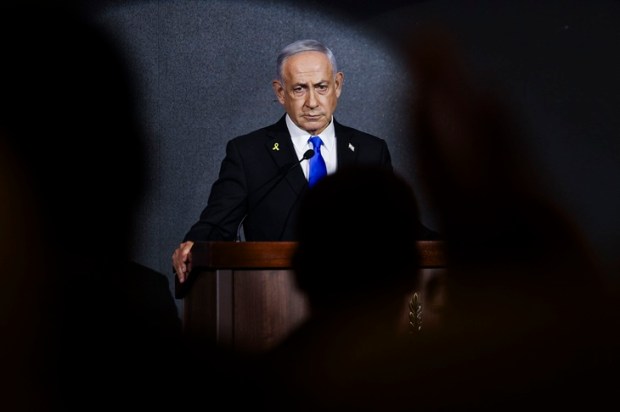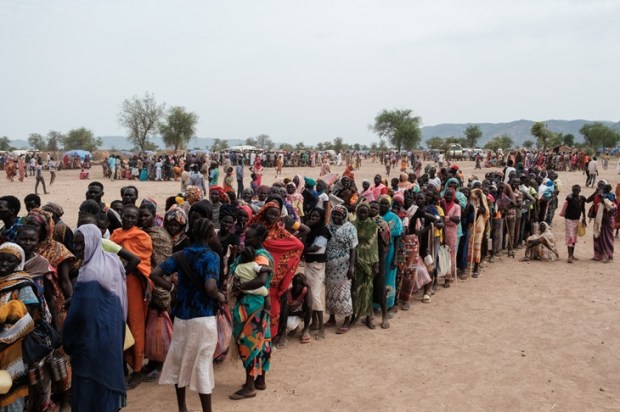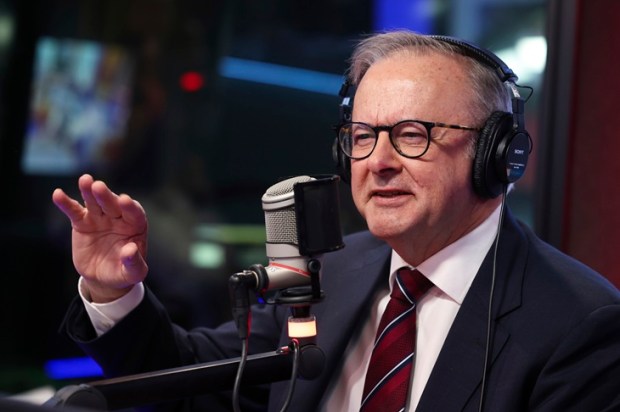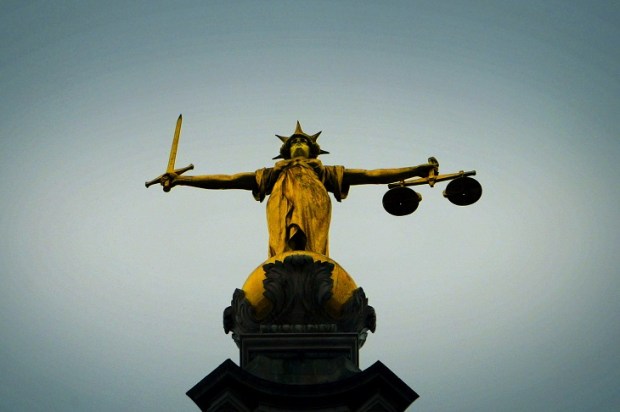Fifteen months of attacks by Iran’s axis of resistance on Israel have proved to be a staggering strategic misjudgement that is reshaping the Middle East.
Iran’s axis was broken at great cost to Iran, Russia, Hezbollah (in Lebanon) and Hamas (in Gaza), while greatly empowering Israel, the United States and Turkey. Israel’s peace agreements with Egypt, Jordan, the United Arab Emirates and Bahrain are likely to expand soon to include Saudi Arabia.
These agreements, many with former enemies who have waged major wars on Israel, are vital to stabilising this turbulent region, for Israel’s security and survival, and for the future of the Palestinians.
As Israeli leaders, including Benjamin Netanyahu, have said many times, ultimately a lasting peace settlement with the Palestinians will only be found after Israel has achieved peace with regional Arab and Persian states that previously funded and armed militant organisations like Hezbollah, Hamas, the Palestinian Liberation Organisation (PLO), and Fatah.
After degrading the military power of Hamas and Hezbollah, and the Assad regime’s overthrow in Syria, two conflicts are yet to play out as Israel and the US now eye the Houthis in Yemen, who continue their attacks on shipping through the Red Sea, and Iran’s nuclear and ballistic missile facilities. The fate of Syria remains uncertain, but the new regime will face external restraints and rival internal forces.
The story of how this happened is extraordinary.
The history
Recently, Israeli Prime Minister, Benjamin Netanyahu, provided an extensive interview with The Wall Street Journal on how the conflicts have played out. He decried those in the West, particularly in the media and universities, who turned on Israel.
It all started on October 7, 2023, with the Hamas slaughter, rape, and mutilation of 1,200 Israelis, mostly civilians, and the taking of 251 hostages. Soon after, Tehran ordered Hezbollah to begin firing missiles into Israel, which led to northern Israel being evacuated.
At first, the US urged Israel not to invade Gaza, and later warned of high casualties if they invaded Rafah. Israel’s war cabinet ignored the US, and the casualties in Rafah were low, as the nearby beach area was declared a safe evacuation zone prior to the attack. For a time, the US withdrew the supply of critical weaponry from Israel. Even after 11 months of missile attacks from inside Lebanon, the US also opposed the Israeli Defence Forces (IDF) taking on Hezbollah.
Critical to Israel’s decision to attack Hezbollah forces in Lebanon, and to its subsequent successes, was the realisation that Hezbollah’s leader, Hassan Nasrallah, had become the effective central leader of Iran’s axis following the 2020 US airstrike that killed Iran’s senior military leader, Qassem Soleimani. He was described as a genius of asymmetrical warfare and the most powerful military leader in the Middle East.
Israel further neutralised a number of key generals of the Iranian Revolutionary Guard. This included bombing the Iranian consulate in Damascus.
Without knowing the outcome of the November 2024 US presidential elections, Israel’s war cabinet decided to attack Hezbollah in October. The attack commenced with exploding pagers, followed by exploding walkie-talkies that stunned Hezbollah and crippled its communications. Then came the bombing of a key meeting of Hezbollah and Iranian leaders that killed not only Hassan Nasrallah, but destroyed the top four echelons of its leadership.
Hezbollah misjudged that Israel would not bomb hundreds of homes that were hiding the organisation’s most advanced missiles. However, Israeli forces took control of Lebanon television and gave six hours of warning for people to evacuate homes storing missiles before they commenced bombing. By the time of the ceasefire on November 27, 2024, an estimated 80 per cent of Hezbollah’s most dangerous missiles had been destroyed and its military leadership and forces severely depleted.
Seizing a further opportunity, the Israeli Airforce attacked and destroyed Iran’s critical air-warning and defence systems, leaving Iran vulnerable to further attacks, while also destroying critical parts of Tehran’s ballistic missile production operations.
Dominoes fall
The Israeli war cabinet also realised that a crushing defeat of Hezbollah could create a domino effect in Syria. Hezbollah was supposed to protect the Assad regime, as it did in 2012 when the protracted 12-year war began in Syria. Assad was saved in 2014 only by massive Russian bombardments, with Hezbollah, Syrian, and other forces coming to his aid.
To strengthen the Syrian army, about 10,000 Iranian military were also deployed into Syria, with about 4,000 involved in high-level military supervision, according to renowned Middle East analyst Gilles Kepel.
However, after the IDF destroyed Hezbollah’s leadership group, many Iranian commanders in Syria were redeployed to bolster Hezbollah in Lebanon, at the expense of Assad’s forces.
With the Tartus Naval Base and the Khmeimim Air Base in Syria, Russia provided essential military support for Assad. However, Russia had, meanwhile, relocated most of its airforce for the war on Ukraine.
Suddenly, Syria became the strategic weak point in the Iranian axis. Depleted of military leadership and with Hezbollah and Russia incapable of supporting Syrian government forces, the Assad regime collapsed in eleven days to the Sunni Islamist group Hayat Tahrir al-Sham (HTS), which was backed by Turkey and Qatar. They also saw the opportunity to remove Assad.
Then the Israelis executed about 500 air raids on arms depots to stop huge weapons caches falling into the hands of the new Syrian authorities or other militant groups operating in Syria.
As Kepel notes in a recent interview, the Syrian regime was not so dangerous directly to Israel, but was the main route for arms supplies from Iran to Hezbollah. Naim Qassem, Hezbollah’s new leader, has admitted that Hezbollah now has lost its main military supply route.
Both Iran and Russia have now withdrawn their forces from Syria, although Moscow has not formally handed over its two bases to the new Syrian authorities.
As rebel leader HTS and now leader of Syria, Ahmed al-Sharaa, said at the end of last year: ‘By removing Iranian militias and closing Syria to Iranian influence, we’ve… [achieved] what diplomacy and external pressure could not, with minimal losses.’
Unfinished business
While Hamas and Hezbollah forces are greatly depleted, the Houthis continue attacking global shipping through the Red Sea. The Houthis are a much more difficult target, heavily embedded underground in Yemen’s mountainous landscapes.
For Iran, the collapse of the Assad regime, on top of the crushing of Hezbollah and Hamas, are losses of historic proportions. According to evidence provided to a US House of Representatives inquiry on National Security, Illicit Finance, and International Financial Institutions, between 2012 and 2019 Iran ‘spent more than $US20 billion to support foreign terror groups in the Middle East and beyond’. Now its axis against ‘the big Satan’ (the US) and the ‘little Satan’ (Israel) is broken and its plan to dominate the Sunni Arab states is faltering.
Moreover, Iran is now vulnerable to more devastating attacks from the Israeli airforce, possibly crippling its nuclear facilities, which are said to be close to producing nuclear weapons. All this at a time when its ageing clerical leadership is increasingly unpopular with its own people and its economy is suffering.
Iran has lost power and influence in the region, while Russia, which has lost bases that allowed it to project its influence and power across the Middle East and Africa, has been drained by its war in Ukraine. Russia has shown that it cannot fight on two fronts at once.
Opportunities and dangers
There are both opportunities and dangers in the new Syria.
Iranian forces and their allies, the main disruptors in Syria, have departed the country.
The US maintains 900 troops in Syria, mostly in the northeast, where they rely heavily on the Syrian Kurds and the Syrian Democratic Forces (SDF) that house 9,000 ISIS fighters in more than 20 prison facilities. At the same time, Turkey regards the Kurdish SDF as a terrorist outfit that indirectly bolsters Kurdish separatists within Turkey.
Turkey is likely to seek influence over the new regime in Damascus. What that involves remains unclear. However, many will be hoping that there is no broader conflict between Turkey and Kurds, which could provide conditions for a revival of ISIS.
The new Damascus regime says it is not seeking conflict with Israel.
One possible outcome is for a benign Syrian regime no longer tied to Assad’s former allies in Iran, Russia, and Hezbollah. Another outcome would be significant foreign interference and chaos, or division of the country.
The new Syrian regime of Ahmed al-Sharaa and his HTS rebels, who had controlled the north of Syria, have been regarded by the US and Australia as a terrorist organisation.
The new government is to be ruled by a loose coalition of Islamist groups whose allegiances, philosophy and intent appear to be a work in progress.
For some years, the HTS has sought to distance itself from its former allies in the world of violent extremism (al-Qaeda and ISIS) and banned terrorist attacks in foreign countries.
While Sharaa and his lieutenants say that they need to respect Syria’s diversity, such new regimes have a history of intolerance and suppression of religious minorities. The tyranny of the majority is an ever-present danger. Many remain apprehensive about how religious minorities, particularly Shiites, Alawites, Kurds and Christians will be treated.
Before the 12-year conflict, Syrian Christians represented about 10 per cent of the total population, about 1.5 million people. Though official data is hard to come by, Aid to the Church in Need believes that Christians now account for as few as 300,000 people.
According to America magazine: ‘Many Christians have fled because of the conflict or because of direct threats from ISIS and other Islamist terror groups, but most have departed from Syria because of its economic and political mire and its ongoing lack of opportunity.’
Rebuilding?
The loss of Hezbollah’s military and political influence may give greater say to other political forces in Lebanon, which needs vast new investments to rebuild the poverty-stricken state.
And, after a truce is made with Hamas, Gaza will require massive investment for reconstruction.
According to the UNHCR, over 7.2 million Syrians remain internally displaced, 70 per cent of the population is in need of humanitarian assistance, and 90 per cent live below the poverty line. About 5.5 million Syrian refugees live in neighbouring countries and 850,000 in Germany.
Who will fund these massive aid and rebuilding projects? Iran and Russia are out of the picture. The wealthy Arab states may contribute, but they are fed up with militant Islamist forces destabilising the region, including their own countries, and more of them are signing peace agreements with Israel.
Israel has demonstrated that it has the intelligence reach, military capability and determination to prevent the rebuilding of military forces against it, particularly on its borders. And, as Gilles Kepel notes, the new Syrian regime’s main backers are Turkey, a NATO member, and Qatar, which is home to the largest US military base in the Middle East. These factors are likely to be restraints on the new Syrian government, limitations on Hamas and Hezbollah rearming, and on Iranian influence in the region.
Hamas’ strategic miscalculation in October 2023 has seen Israel generate tectonic geopolitical shifts in the Middle East. The main regional disruptors have been heavily damaged, the prospects for greater regional stability have improved – and this has happened despite the Western political, academic and media chorus that has raged against Israel.
Patrick J. Byrne, a former national president of the National Civic Council.

























